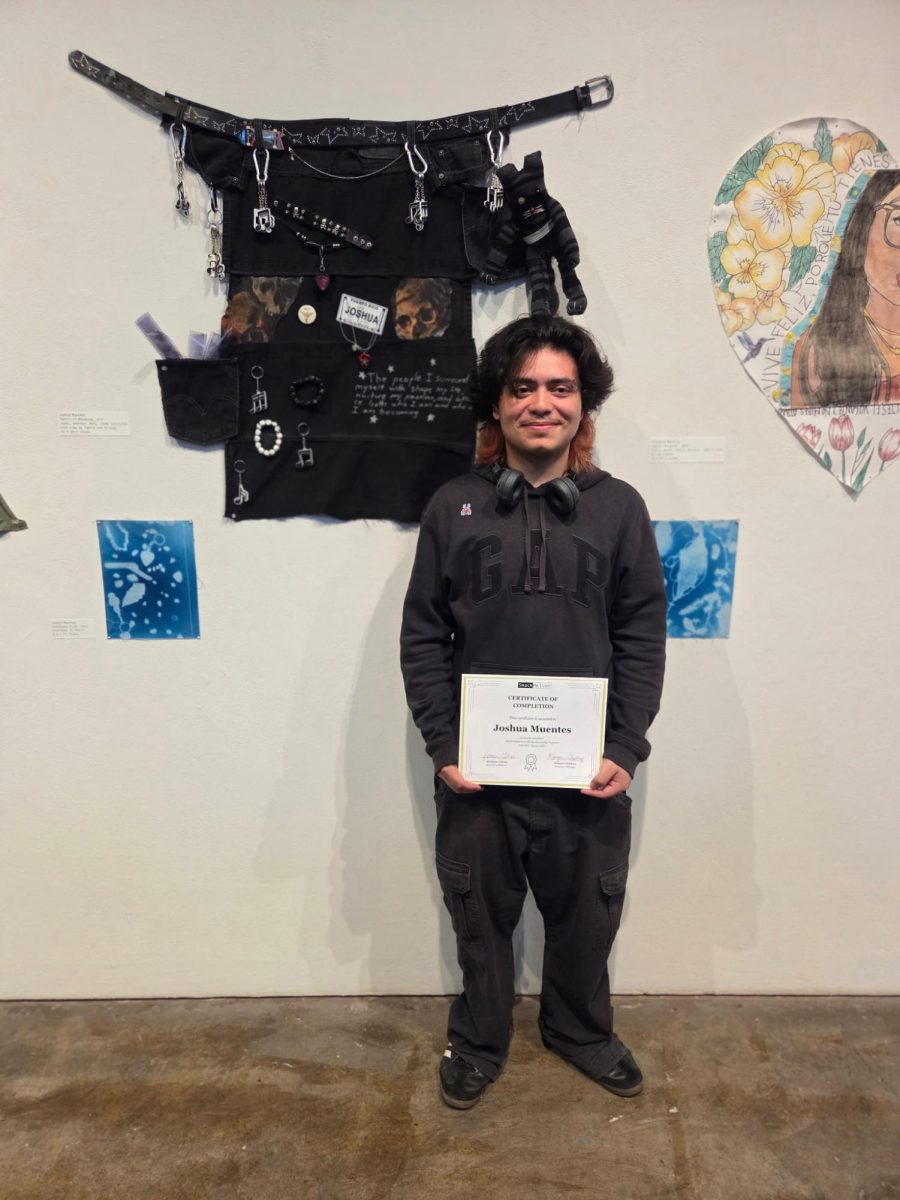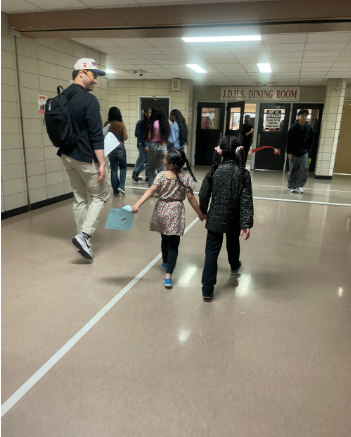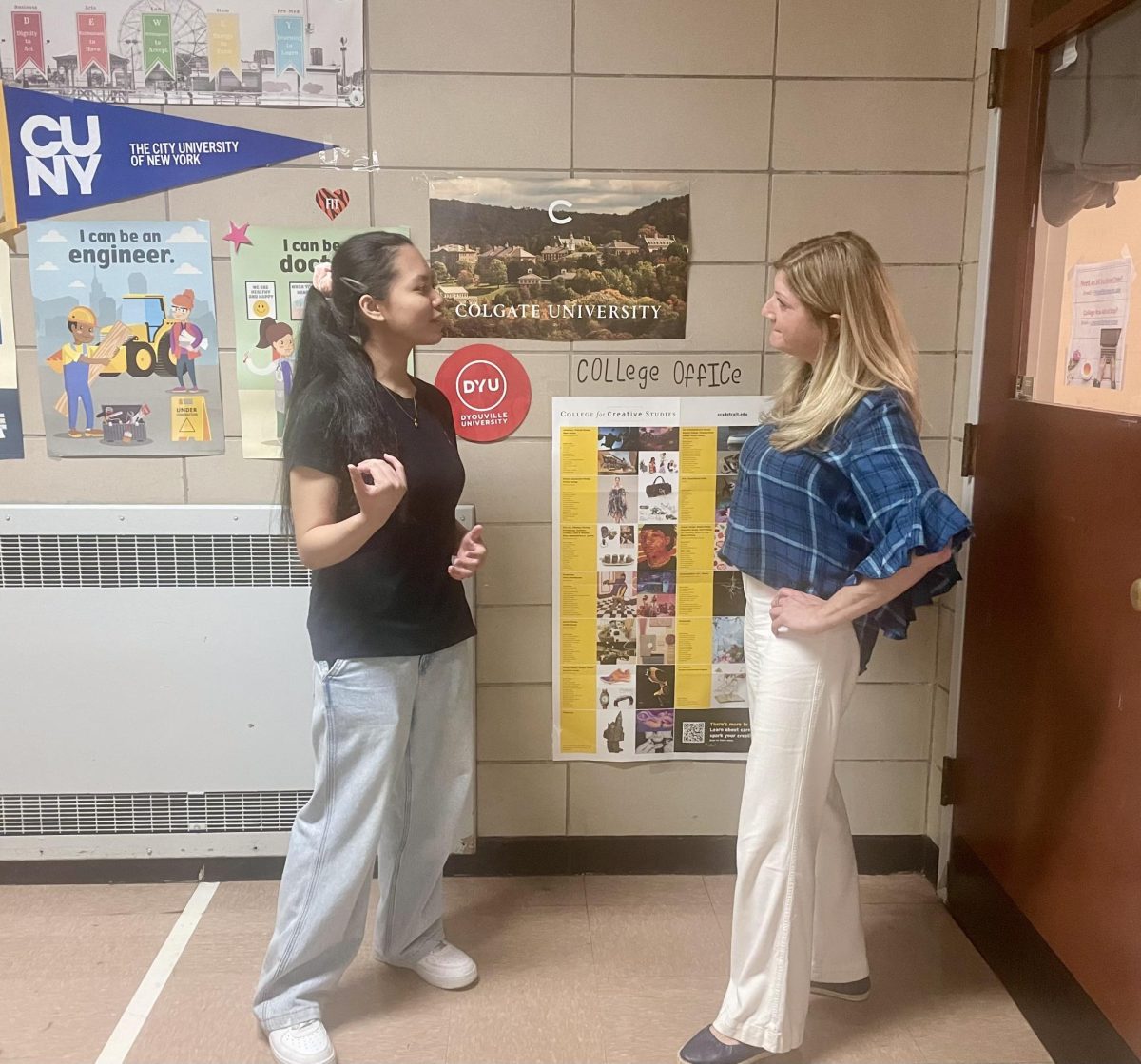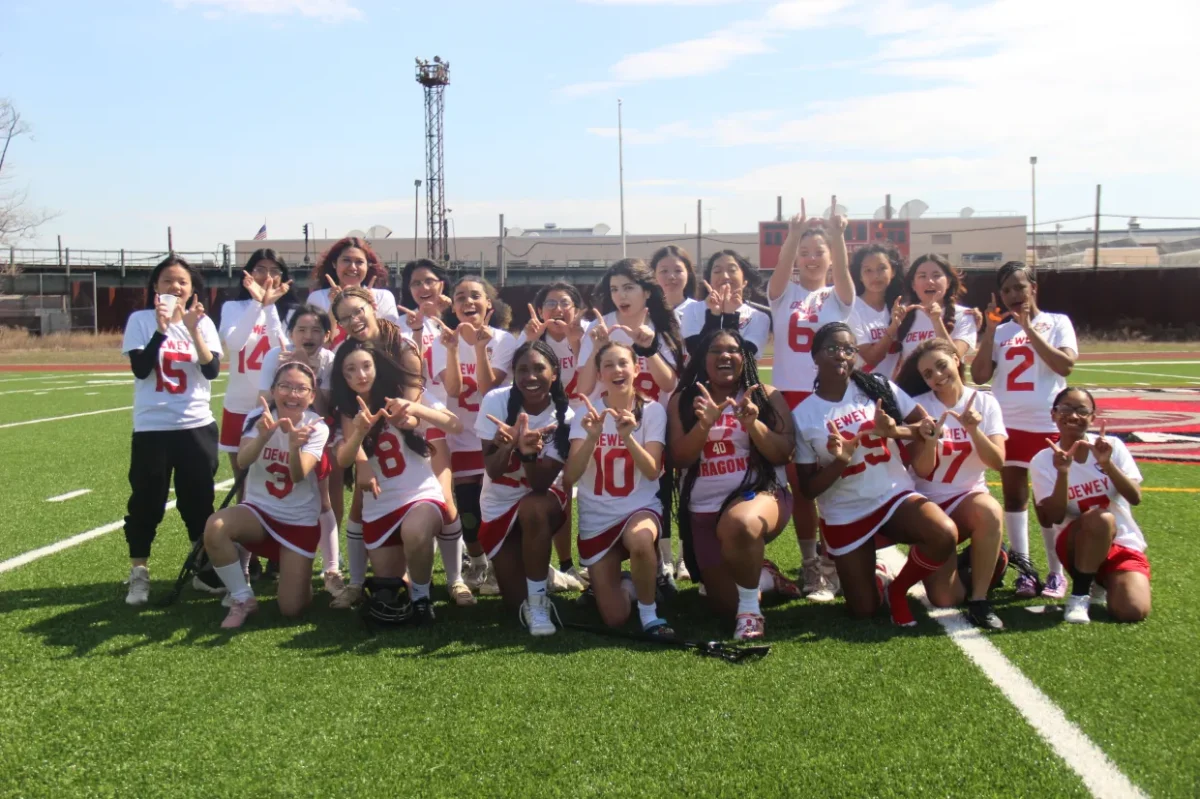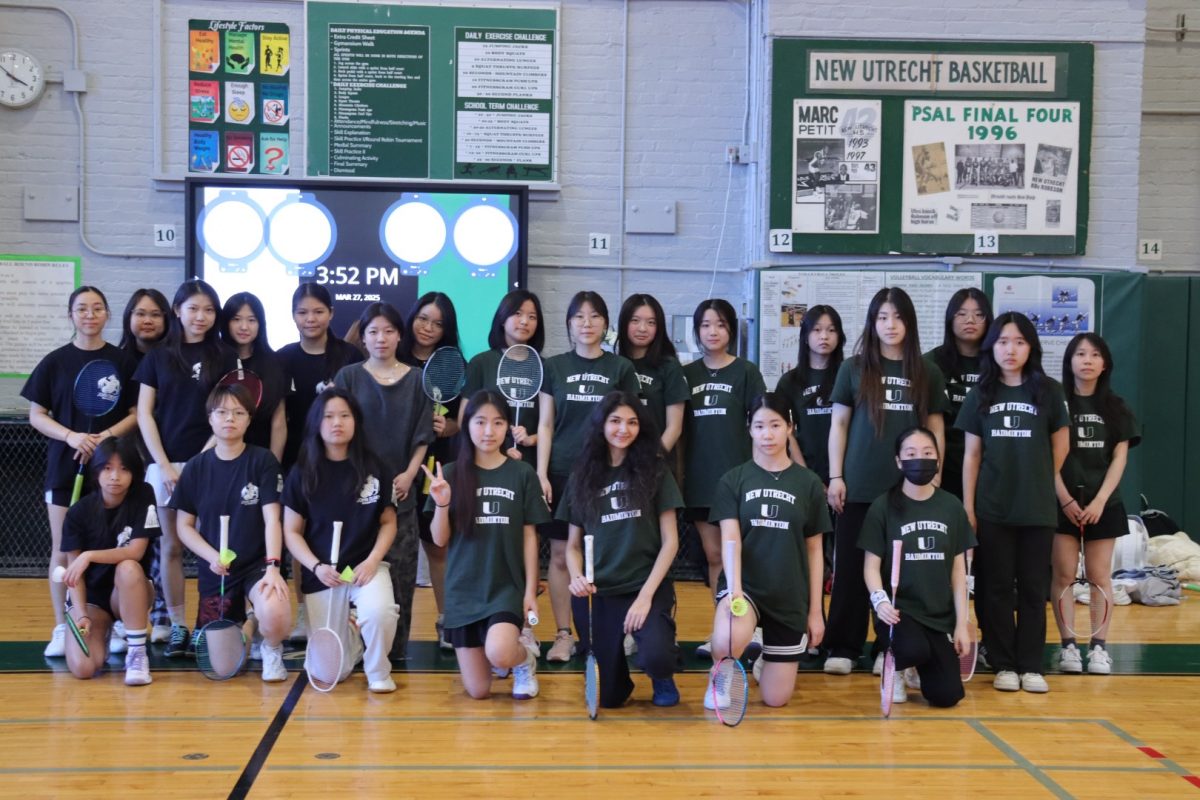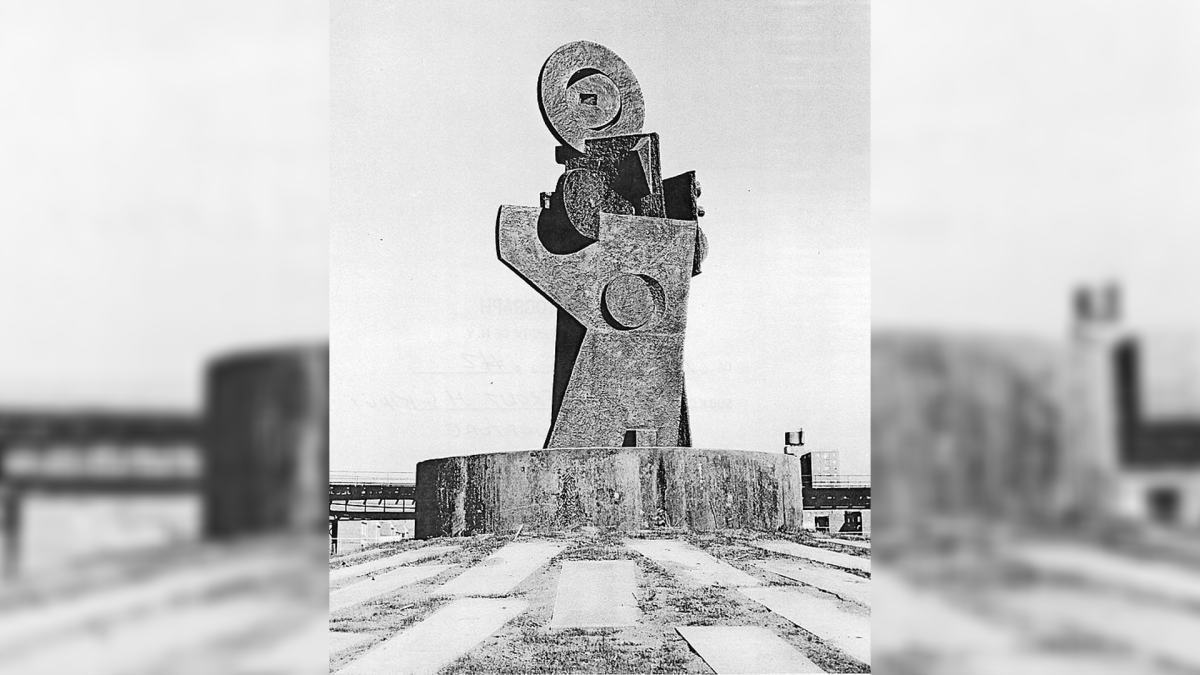Have you ever pondered about the meaning of the weird abstract statue, which everyone uses as a comfy sitting spot in front of the school? Sure, it’s there for decoration, the campus is huge after all. But not many students know what “The Key to Knowledge” Statue really stands for and represents.
Crafted from copper and standing tall since the school’s opening in 1969, it has silently witnessed decades of students making it their favorite hangout spot. At the time, the statue represented a philosophy, a key that unlocks a valuable idea that many schools at the time hadn’t implemented.
Students seeing the statue for the first time usually think similarly to how Bilal Ahmed, a senior from John Dewey High School, described his first experience, “I thought it was some abstract art with not much meaning to it”. Bilal added, “To me, it’s just a meet up area for the students who hang out after school.”
While it’s uncommon for students to know the full history and meaning of the statue, for teachers who have been in the school for a while now, it’s a different question. As Mr. Inoa, the journalism teacher from John Dewey High School, explains, “We [teachers] not only want to be the passageway to students’ knowledge but also the students’ curiosity, to me the statue symbolizes that level of academic independence.”
According to both the students and the teachers, it’s more than just a piece of art to fill in the campus, it stands for something, whether it’s there for a nice relaxation area, or a symbol which connects with academic concepts. The statue was originally meant to embody the principles of John Dewey, the school’s namesake, who also holds a significant place in the world of education. Dewey believed in learning through experience, and this statue quietly nods to that philosophy. It’s like a symbol saying, “Hey, learning isn’t just about books, it’s about an immersive journey of unlocking knowledge through meaningful involvement.”

As mentioned previously, Dewey’s philosophy centered on “learning by doing”. He argued that understanding grows when students actively participate in their education, applying knowledge to real life situations. For him, classrooms weren’t just places of instruction but active laboratories for personal and intellectual growth. And despite the numerous changes to the school’s education system prompted by New York State policies, this philosophy has still endured, and today we witness its continuation in the vibrant landscape of our school clubs. During clubs, students are not mere spectators, instead they’re active participants, collaborators, and contributors. Whether it’s the robotics club, where students design and build cool functional robots, or the gardening club, where they engage in hands-on conservation efforts, each club provides a unique way for applying academic knowledge in a real world context. They showcase that education, as envisioned by Dewey, extends beyond the confines of our classrooms.
In essence, “The Key to Knowledge” Statue symbolizes the timeless principles of John Dewey, the visionary in education. It mainly displays Dewey’s philosophy of experiential learning, urging students to see education as a dynamic journey beyond textbooks.



